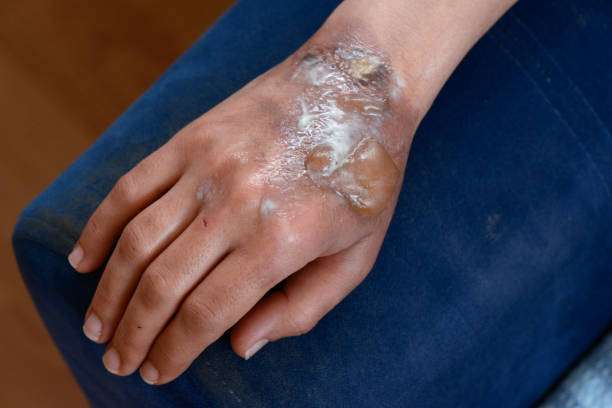At Dr. Tayyab saleem malik clinic (Cosmetic Enclave)
Chronic burns are a specific type of burn injury that refers to burns that fail to heal or show delayed healing, resulting in persistent or recurrent symptoms. Unlike acute burns that generally heal within a few weeks, chronic burns can last for an extended period and require ongoing management and treatment.
Here are some key points about chronic burns:
- Causes: Chronic burns can result from various factors, including inadequate initial treatment of acute burns, improper wound care, repeated exposure to irritants or trauma in the affected area, infection, poor circulation, or underlying medical conditions that hinder healing.
- Characteristics: Chronic burns are often characterized by slow or incomplete wound healing, persistent pain or discomfort, ongoing inflammation, and the development of chronic wounds or ulcers. The skin in the affected area may appear discolored, thickened, or scarred. These burns can significantly impact the quality of life and daily functioning of the individual.
- Complications: Chronic burns can lead to several complications, including infection, cellulitis (skin infection), osteomyelitis (bone infection), contractures (tightening and shortening of tissues), deformities, chronic pain, reduced mobility, psychological distress, and an increased risk of developing certain skin cancers.
- Treatment Options: The management of chronic burns requires a comprehensive approach that addresses the underlying causes, promotes wound healing, manages complications, and enhances the individual’s well-being. Treatment options may include:
- Wound care: Proper wound care techniques, such as regular cleaning, debridement (removal of dead tissue), dressings, and topical medications, are crucial for promoting healing and preventing infection.
- Surgical interventions: In some cases, surgical procedures may be necessary to remove non-healing tissue, improve blood supply to the affected area, or perform skin grafts or flaps to close chronic wounds.
- Pain management: Chronic burns can cause persistent pain, which may require a multidisciplinary approach involving medications, nerve blocks, physical therapy, and psychological support.
- Infection control: Preventing and treating infections is essential to avoid complications and promote healing. This may involve antibiotics, wound cultures, and appropriate wound care practices.
- Rehabilitation: Physical and occupational therapy can help restore mobility, improve function, and prevent contractures. Therapeutic exercises, splinting, and assistive devices may be utilized.
- Psychological support: Coping with chronic burns can be emotionally challenging. Mental health support, counseling, and support groups can help individuals navigate the psychological impact of their condition.
- Prevention and Long-term Management: Preventing chronic burns is crucial. Proper first aid and immediate medical attention for acute burns, adherence to wound care instructions, and lifestyle modifications to reduce the risk of burn injuries can help prevent chronicity. Individuals with chronic burns require long-term monitoring and follow-up care to manage their condition, prevent complications, and address any emerging issues.
Chronic burns pose significant challenges, and their management often requires specialized care from healthcare professionals experienced in burn management and wound healing. Seeking timely and appropriate medical attention is essential for individuals with chronic burns to receive the necessary treatment and support for their unique circumstances.

